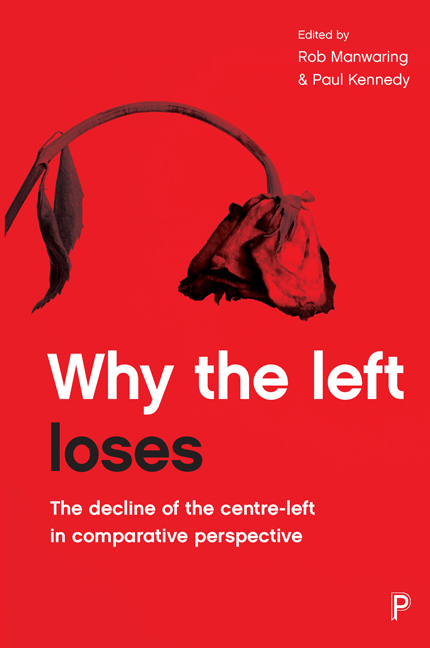Book contents
six - Exit left: the case of Australian state Labor
Published online by Cambridge University Press: 08 April 2022
Summary
Introduction
The Australian Labor Party (ALP) is a distinctive case of social democracy. As Carol Johnson outlines in her chapter in this volume (Chapter 5), the case of federal Labor offers key insights into the plight of the centre-left more generally. The ALP case is striking because it was one of the earliest centre-left parties to implement neoliberal reforms. However, what is often over-looked in the Australian case is the story of state (Labor) governments.
This chapter is a corrective to this narrative that marginalises the sub-national state Labor story. It outlines four distinctive state Labor governments in Australia in the states of New South Wales (NSW), Victoria (VIC), Queensland (QLD) and Western Australia (WA). In all cases, Labor held office for a relatively sustained period of time, before eventually losing. Indeed, from 2002-07 the ALP was in power in every state and territory in Australia – a striking phenomenon that Geoff Gallop, former WA Premier, described as an era of ‘strategic government’ (Gallop, 2007). These state Labor governments offered a distinctive approach to governance that reshaped and renewed the trajectory of social democracy, especially in the face of neoliberal economic settings. Yet, in almost all these cases, these Labor governments were ejected from office. However, in contrast to some of the other cases in this volume, Labor has regained power in many of the state jurisdictions. So, while the Labor model of ‘strategic government’ might have passed, there might be further lessons here about how Labor can regain power.
This chapter offers a critical examination of the phenomenon of the dominance of Labor at state level in the mid-2000s. Underpinning this chapter are two key interrelated questions. First, what was ‘Labor’ about these governments? Clearly, we would identify them as centreleft governments because they were creatures of the ALP. Yet, more critically, what, if anything, made them social democratic? For a range of reasons explored below, there is no clear answer to this question, and the case of sub-national Labor sheds light on the centre-left's ongoing existential crisis. Second, why did these long-standing Labor governments lose office?
- Type
- Chapter
- Information
- Why the Left LosesThe Decline of the Centre-Left in Comparative Perspective, pp. 85 - 100Publisher: Bristol University PressPrint publication year: 2017



